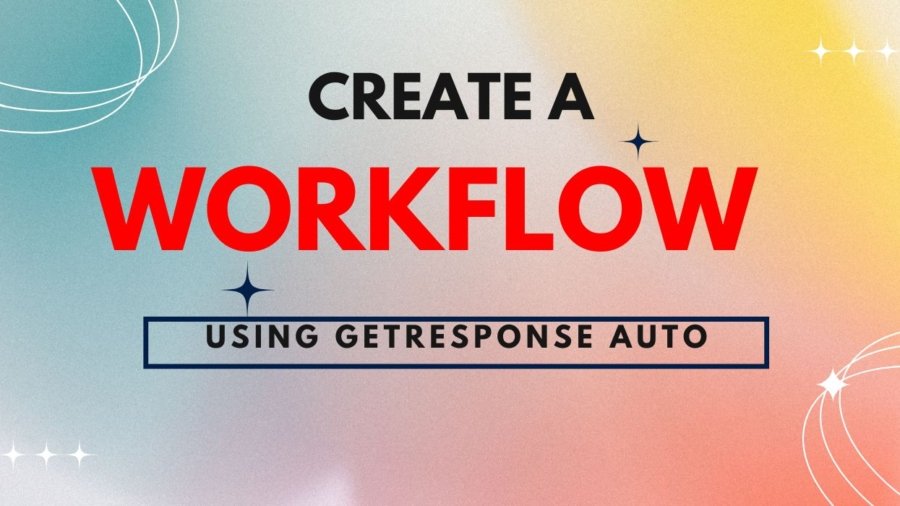In today’s fast-paced digital world, automation has become a vital part of any successful marketing strategy. Marketing automation tools like GetResponse help businesses save time, improve efficiency, and deliver highly personalized experiences to their customers.
Whether you’re looking to nurture leads, improve customer engagement, or boost conversions, GetResponse automation can make a significant difference. By setting up an automated workflow, you can create a seamless journey for your subscribers that drives them toward meaningful actions—without having to manually intervene at every step.
In this guide, we’ll walk you through the essential steps to create a workflow using GetResponse automation. From setting up triggers to testing and optimizing your workflow, you’ll gain a solid understanding of how to leverage this powerful tool for your marketing efforts.
1. Setting up Triggers and Actions – automation
Triggers and actions are the foundation of any workflow in GetResponse automation. The first step in creating your automated workflow is determining what actions or events will initiate the automation (known as triggers). Triggers can be as simple as a subscriber signing up for your newsletter, purchasing a product, or clicking a link in one of your emails. The beauty of GetResponse automation is that it allows you to set up an unlimited variety of triggers based on how your subscribers interact with your business.
Once your triggers are defined, the next step is to set up corresponding actions. These actions are the steps that will take place once a trigger has been activated. For example, when a new subscriber signs up, you could set up a series of welcome emails to introduce your brand. Alternatively, if someone makes a purchase, you might want to send them a confirmation email followed by a satisfaction survey or upsell offers.
This step allows you to create a seamless experience for your subscribers by ensuring that they receive the right messages at the right time.
2. Segmenting Your Audience – automation
One of the most important aspects of creating an effective workflow is segmenting your audience. By dividing your subscribers into smaller, more targeted groups, you can send them messages that are specifically tailored to their interests, behaviors, or demographics. This ensures that your communications are relevant and personalized, which is key to driving engagement and conversions.
Segmentation allows you to send the right message to the right person, rather than relying on a one-size-fits-all approach. For example, you could create segments based on criteria such as geographic location, purchasing behavior, or engagement with previous emails. Once your segments are defined, you can craft messages that speak directly to the needs and interests of each group. This not only improves the user experience but also helps reduce the risk of unsubscribes and improves conversion rates.
3. Creating Personalized Content automation
Personalization is at the heart of successful email marketing. GetResponse automation enables you to deliver highly personalized content to your subscribers, which significantly increases the chances of your emails being opened, read, and acted upon.
Personalization can be as simple as including your subscriber’s name in the subject line or body of the email. But GetResponse automation goes beyond that—allowing you to create dynamic content that adjusts based on the subscriber’s behavior, preferences, or past interactions with your brand. For example, if a subscriber has shown interest in a specific product category, you can send them personalized recommendations based on that interest.
By using dynamic elements such as personalized text or images, you can make your emails feel more relevant and engaging, which helps build a stronger connection with your audience.
4. Testing and Optimization
Once your workflow is up and running, it’s crucial to continually test and optimize it to ensure its effectiveness. A/B testing is a powerful method for comparing different versions of your emails or workflows to determine which one performs better. You can test subject lines, email copy, design, and even the timing of your emails to see what resonates most with your audience.
Optimization is an ongoing process that requires you to continually review the performance of your workflow. With GetResponse’s reporting tools, you can track metrics such as open rates, click-through rates, and conversion rates. By analyzing this data, you can pinpoint areas where your workflow can be improved. Whether it’s tweaking your email copy, adjusting the timing of your messages, or modifying your call to action, small adjustments can make a big difference in improving the overall performance of your workflow.
5. Monitoring and Analyzing Results
The final step in creating a successful workflow is monitoring and analyzing its performance. GetResponse provides detailed analytics and reporting tools that allow you to track the success of your automation campaigns in real time. By reviewing key metrics like open rates, click-through rates, conversion rates, and bounce rates, you can gain valuable insights into how your subscribers are interacting with your content.
These insights are crucial for making data-driven decisions about how to refine and improve your workflows. For instance, if you notice that a particular email is underperforming, you can make changes based on the data, such as adjusting the subject line or content to make it more compelling. Continuous analysis and refinement ensure that your automation workflows are always running at peak performance, ultimately driving better results for your business.
Conclusion
Creating a workflow using GetResponse automation allows you to simplify your marketing efforts and provide a more personalized experience for your audience. By following the steps outlined in this guide—setting up triggers and actions, segmenting your audience, creating personalized content, testing and optimizing, and monitoring results—you can build an effective workflow that helps nurture leads, improve engagement, and boost conversions. With the power of automation, you can focus more on growing your business while delivering timely, relevant messages to your subscribers.


